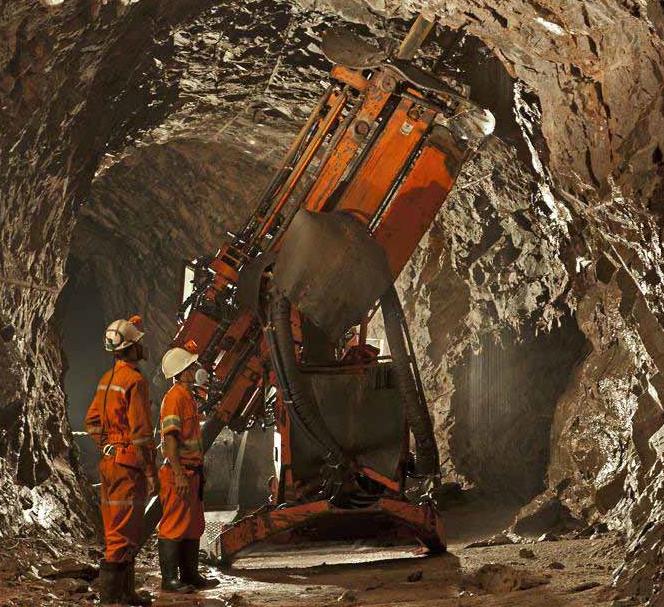
A vitally important asset in the portfolio of Yamana Gold, the Minera Florida mine continues to grow and evolve, 26 years since operations commenced.
Very much a pillar of Chile’s economy, the country’s mining sector has played an important role throughout the history of a nation that came into being some 10,000 years ago when migrating Native Americans settled in the long and narrow coastal strip of land that lies between the Andes Mountains and the Pacific Ocean.
While the Spanish conquistadors that arrived and took possession of the region in the middle of the 15th century came up short in their hunt for the extensive reserves of gold and silver that they believed to be under Chile’s soil, the event in many ways marked the dawn of Chile’s mining legacy. Several years after gaining independence from Spain in 1818, commercial relations between the country and the rest of the world were formally established, kick-starting the significant exploitation of minerals such as silver and copper.
Most mining in the country is today concentrated in and around the Norte Grande region, which spans much of the Atacama Desert. Mining products of Chile include copper, gold, molybdenum, iron, coal and silver, of which Chile is the world’s fifth largest producer. Gold is mainly produced as a by-product from the country’s many copper mining operations, with approximately 1.5 million ounces produced per year.
Located 73 kilometres south of Santiago, Minera Florida is an underground gold and silver mine that began operations in 1986. Commencing production at a processing rate of 10,000 tonnes per month, the mine developed rapidly in the subsequent decades with this rate increasing to 35,000 tonnes per month by 2003. Purchased by Meridian Gold from a private Chilean company in July 2006, the mine was subsequently absorbed into the Yamana Gold company little more than a year later.
For its part, Yamana Gold boasts a diverse portfolio of assets, providing sustainable gold production, supported by a large resource base. With operations in some of the world’s most stable mining jurisdictions, including Brazil, Argentina and Mexico, Yamana Gold also operates with industry-low cash costs. Taking into account expansions across all of its current operations and projects that are under development, the company’s production volume is expected to increase by more than 60 percent to a level of approximately 1.75 million gold equivalent ounces by 2014.
In 2010, workers at Minera Florida uncovered an extremely high grade Victoria vein structure. This discovery has since led to the company adding to previous exploration success and has increased grade and total mineral resources of gold to over 842,000 proven and probable ounces and a further 529,000 measured and indicated ounces. Levels of silver meanwhile have increased to 6.3 million proven and probable ounces and 2.8 million of measured and indicated ounces. Combined, this provides the mine with an estimated strategic life of over eight years, according to Yamana Gold.
More good news followed a year later with total gold equivalent mineral reserves at the mine increasing by 28 percent over the course of 2011. This was largely due to the inclusion of historic tailings, which would go on to be re-processed in April 2012. It is believed that these tailings will ultimately add around 40,000 gold equivalent ounces per year to the mine’s production volumes over the next five years.
New mineral resources outlined in the main core of the mine during 2011 also contributed significantly to a 46 percent increase in its total measured and indicated volumes. Over the course of 2011 near-mine exploration focused predominantly on delineating extensions to the ore bodies in the Portzuelo, El Robie and Tribuna zones. During 2012, exploration has extended to the company’s newly acquired Mila claims, situated five kilometres south of the current mining operation.
Several other developments at Minera Florida have grabbed the headlines in recent months including the construction of a new re-process tailings facility and the large investments that have been made in new power generation facilities. The diesel-fired plant will optimise the power supply for a $56 million project to process old tailings at the operation. The new power plant will ensure operational continuity at the tailings processing plant as well as independence from the country’s Central Interconnected Grid.
Minera Florida’s tailings re-treatment plant was completed in May 2012, with ramp up to design capacity delayed in part due to the installation of a zinc recovery plant that was not initially contemplated. The zinc recovery plant is expected to further improve costs through the application of additional zinc by-product credits.
Overall costs meanwhile are expected to improve when taking into account the addition of tailings production given the lack of mining costs associated with the process of re-treating tailings. In the months to come, it is believed that mine grade will remain consistent with Yamana Gold’s estimates, while overall site performance will be augmented by the ramping up of the processing of relatively low-cost historical material.
Internally, the recently strengthened leadership team that has been established at senior management level in Chile continues to focus on the mine’s operations, making the expansion and success of Minera Florida their utmost priority.
Written by Will Daynes, research by Richard Halfhide



 Minera.Yamana-Americas-Dec12-Bro-s.pdf
Minera.Yamana-Americas-Dec12-Bro-s.pdf









